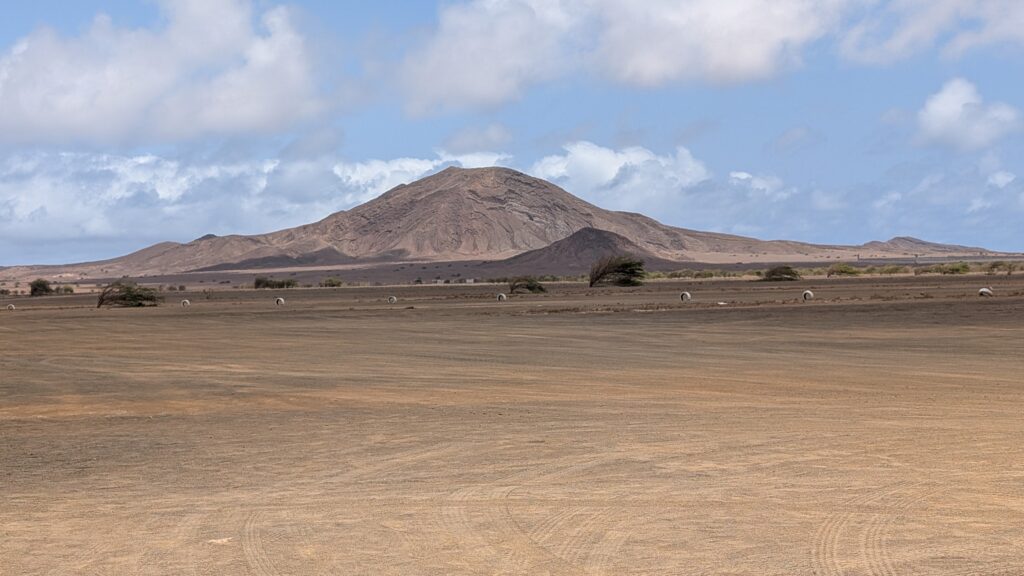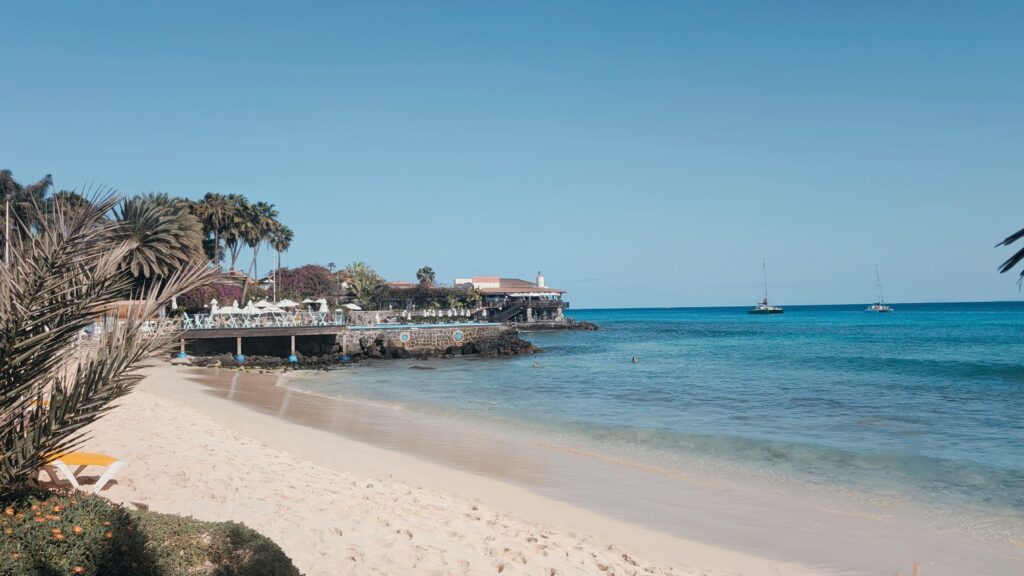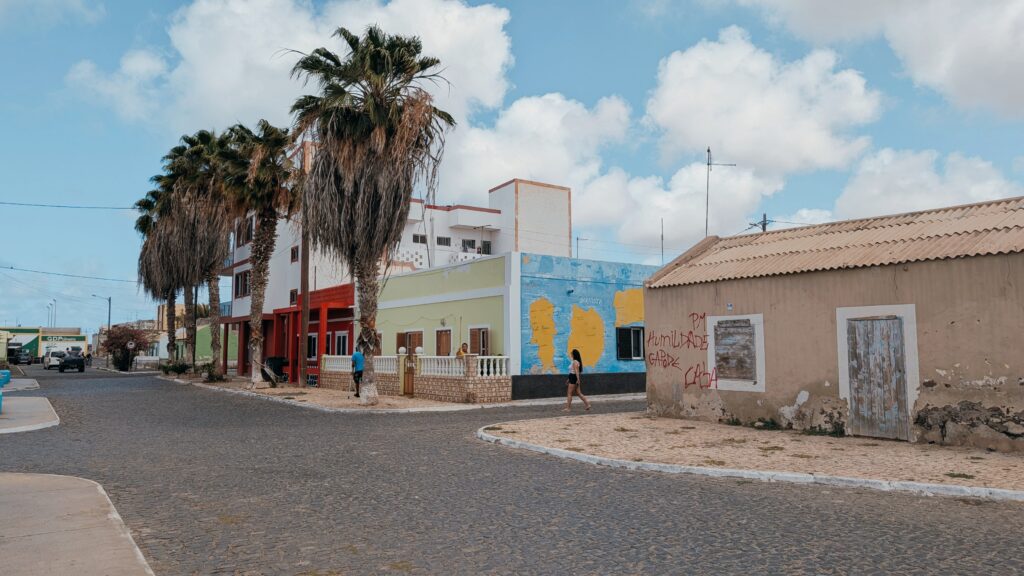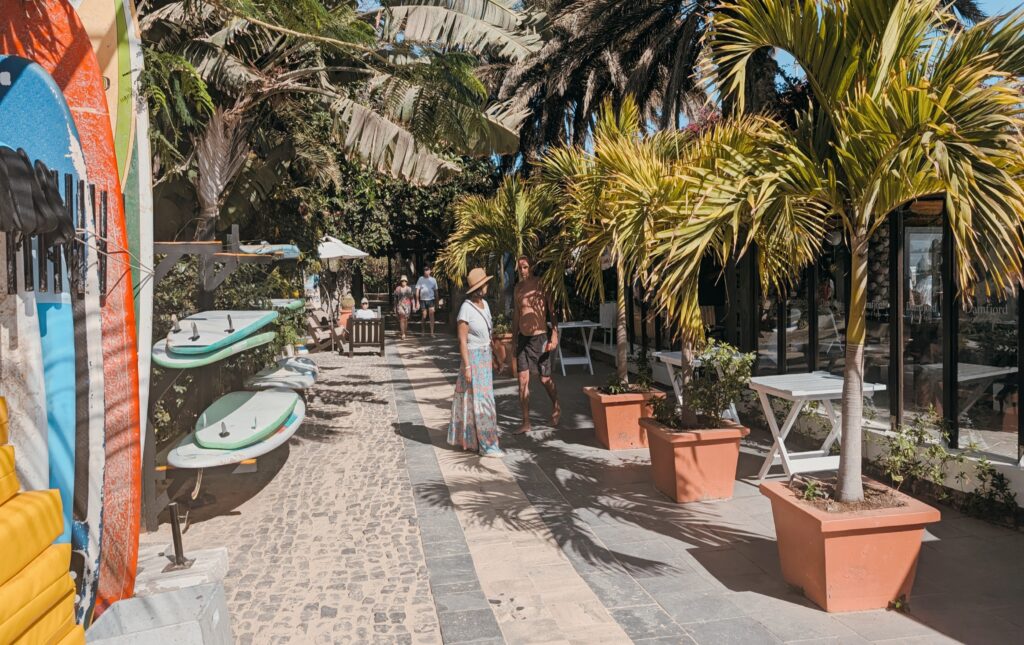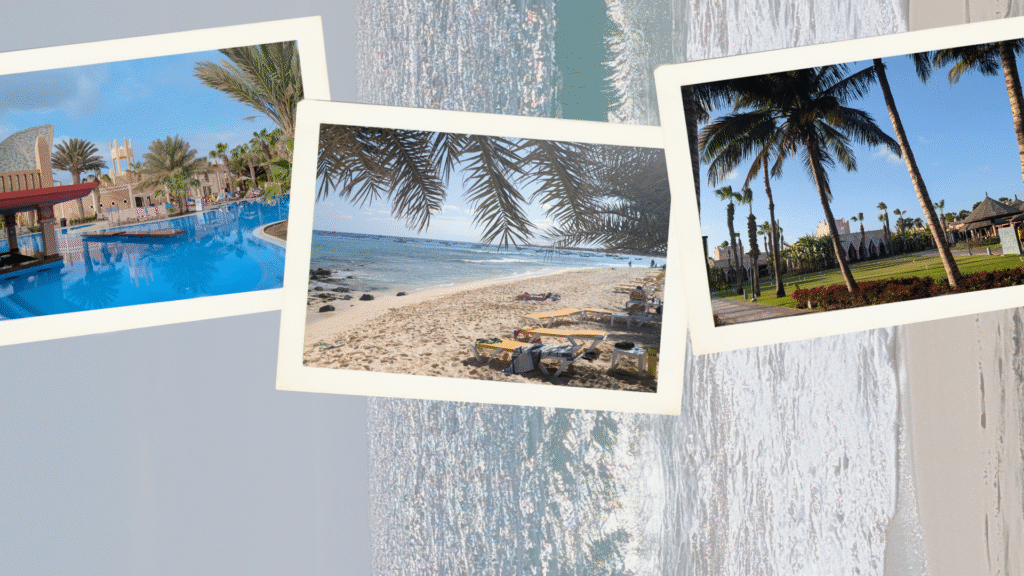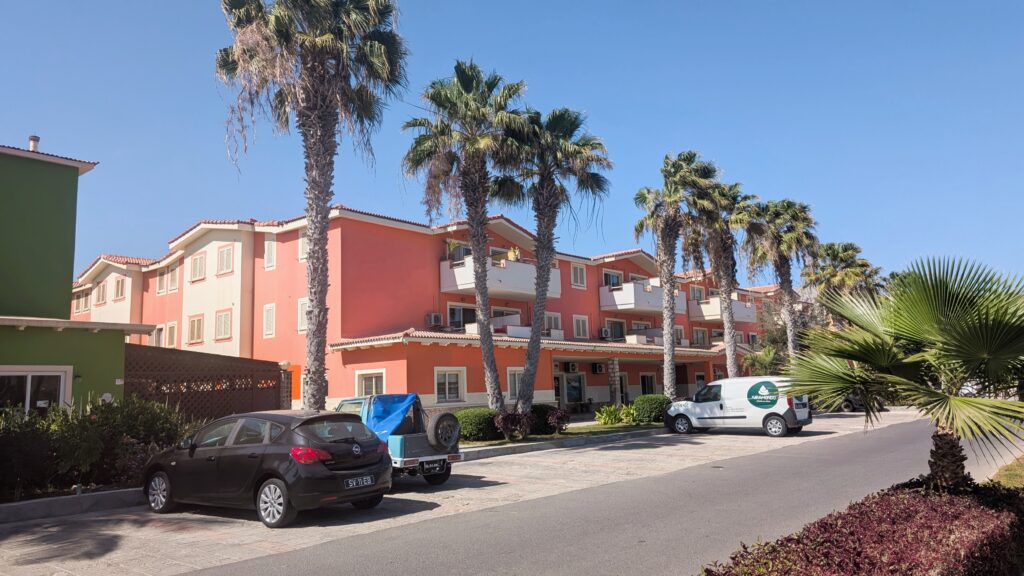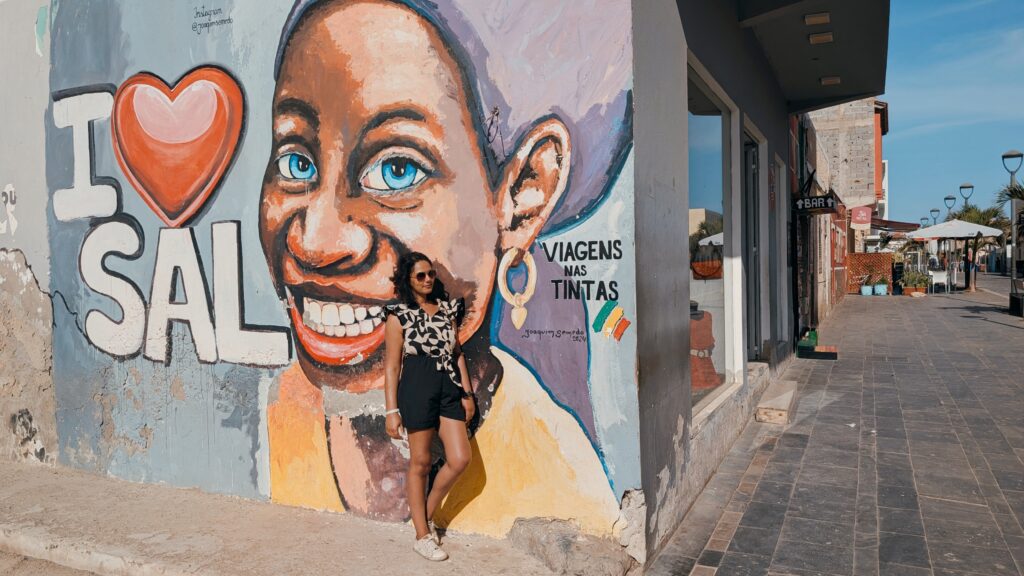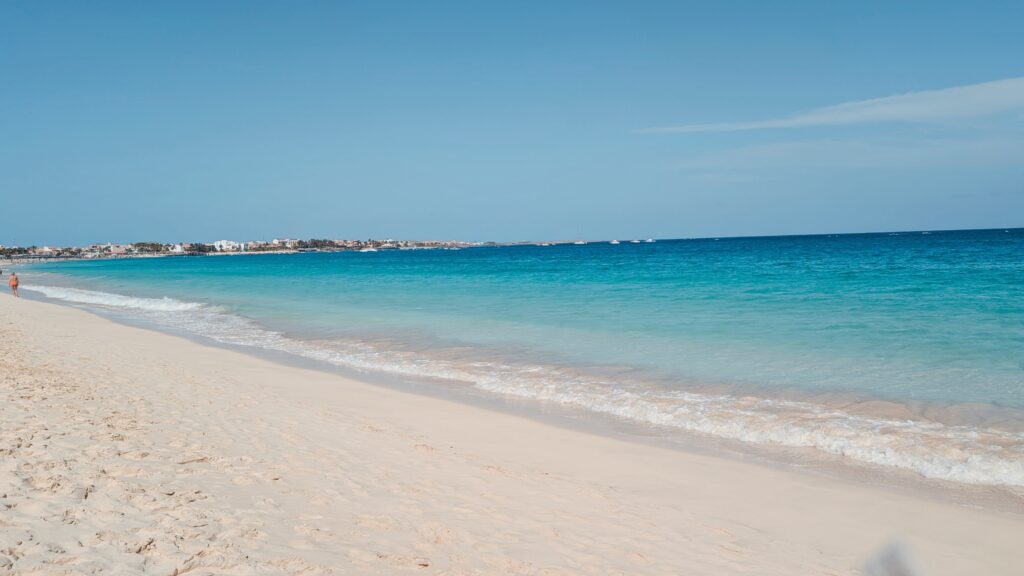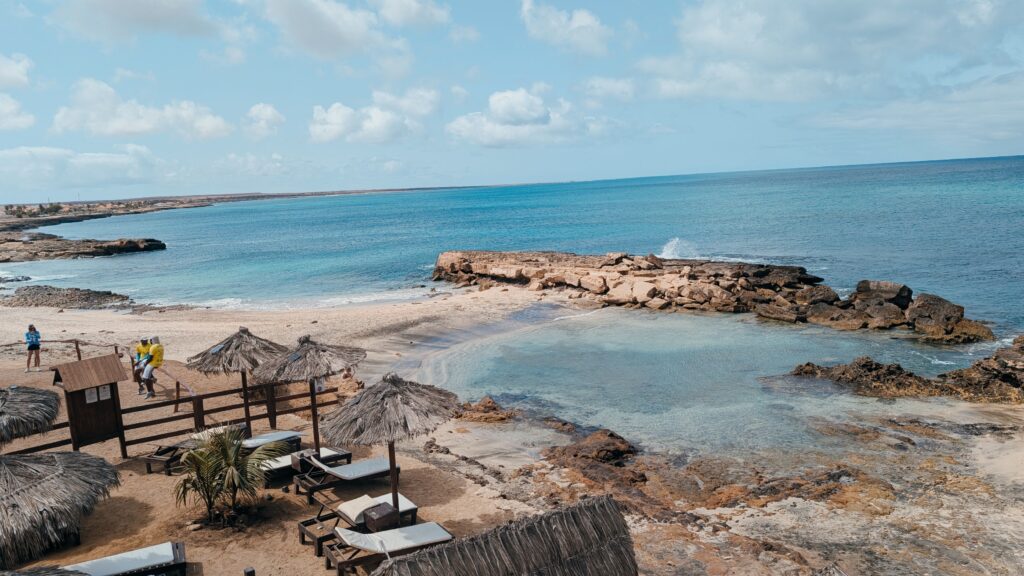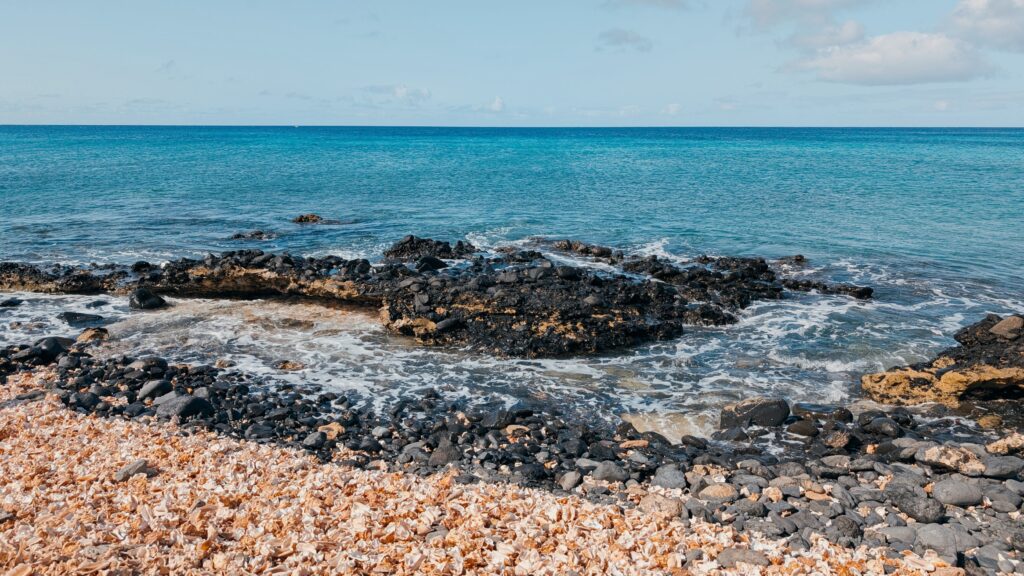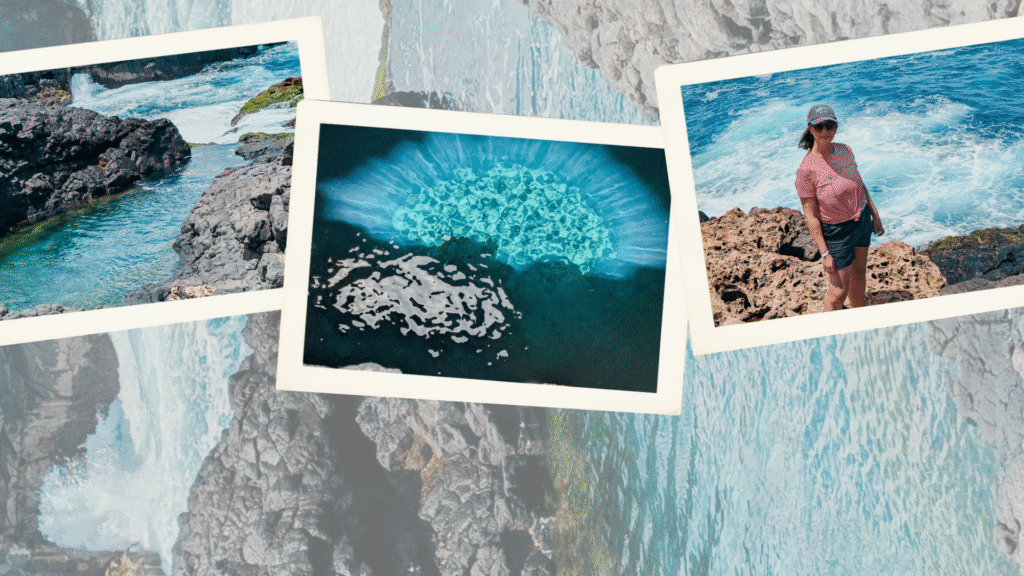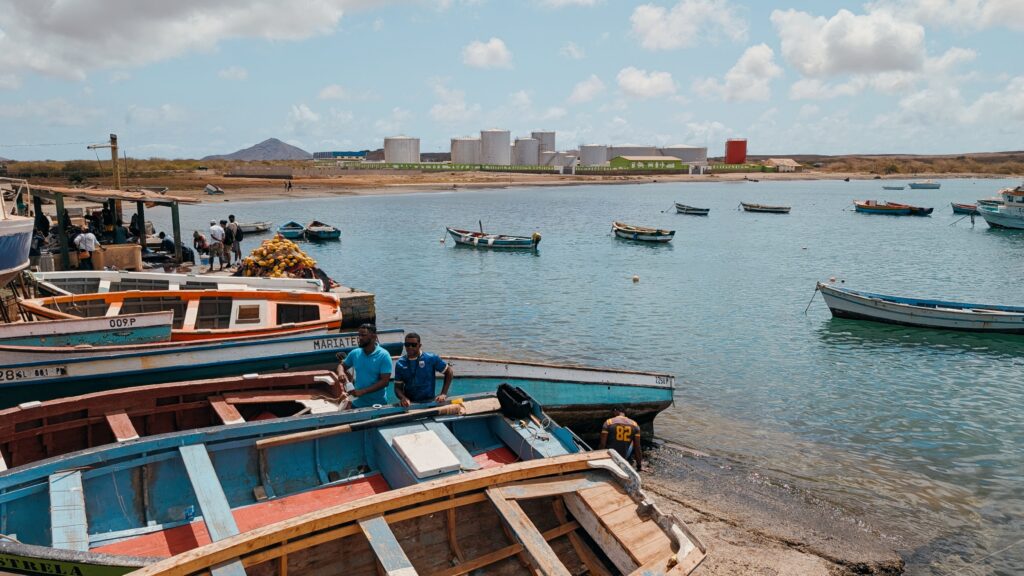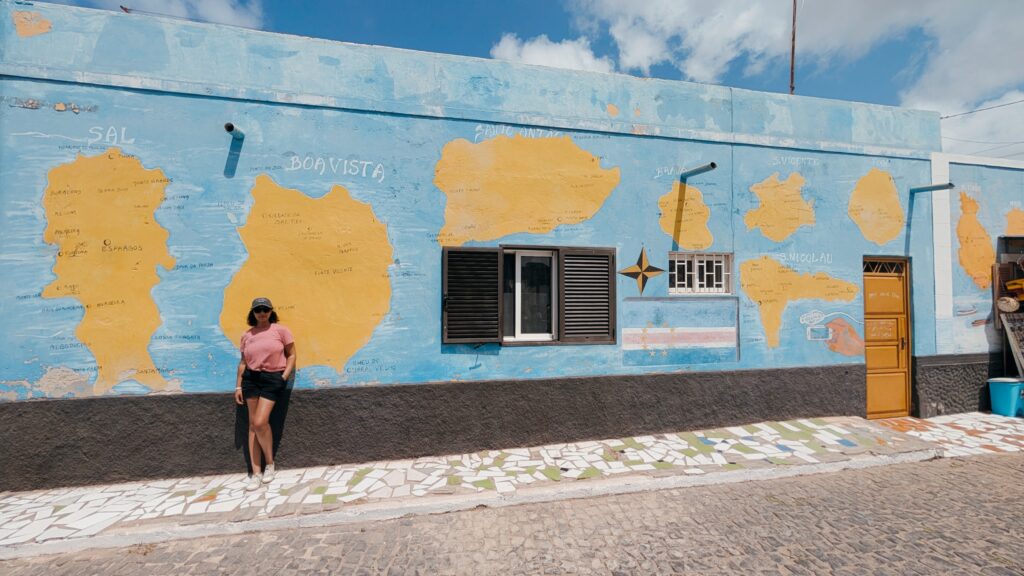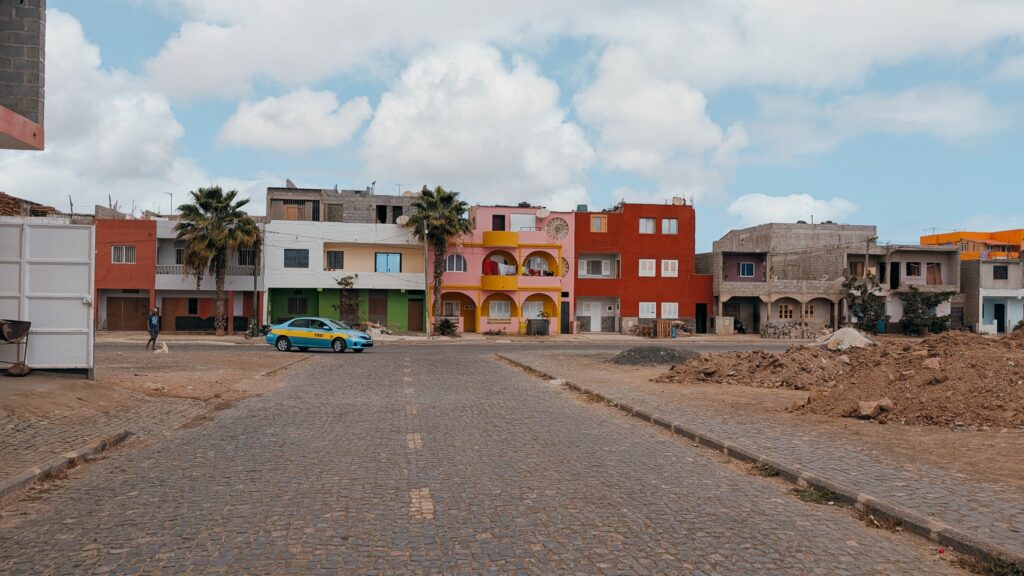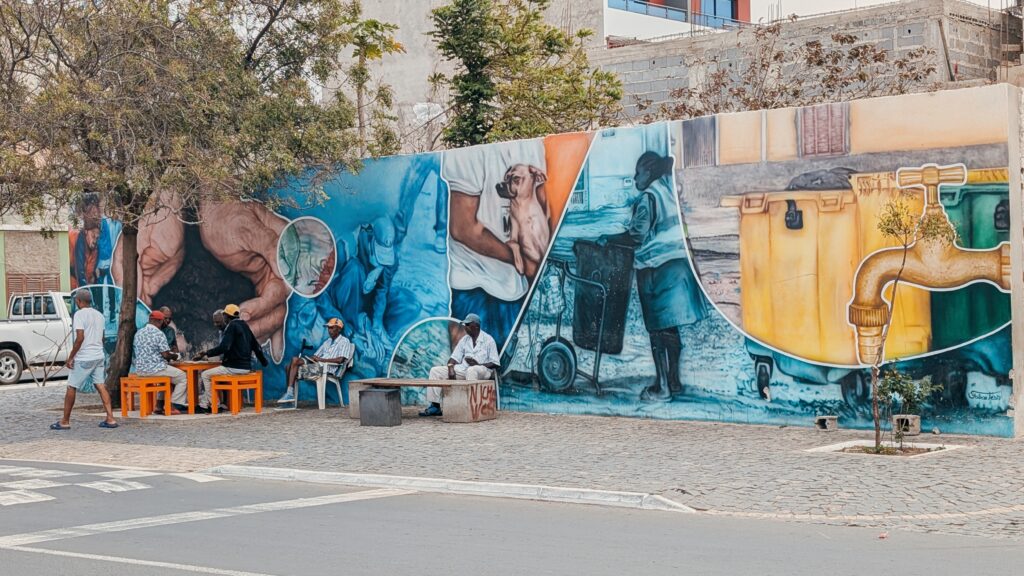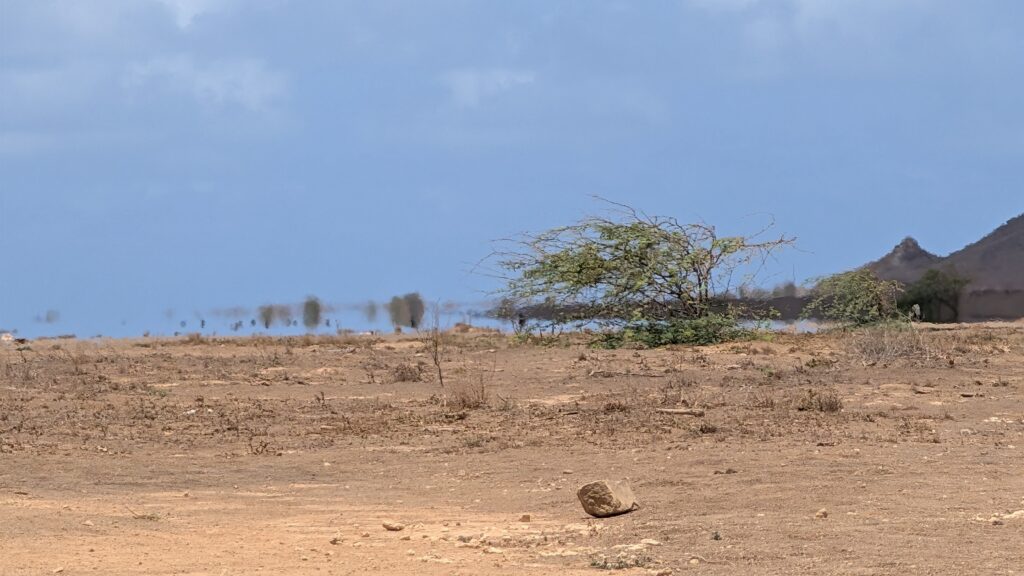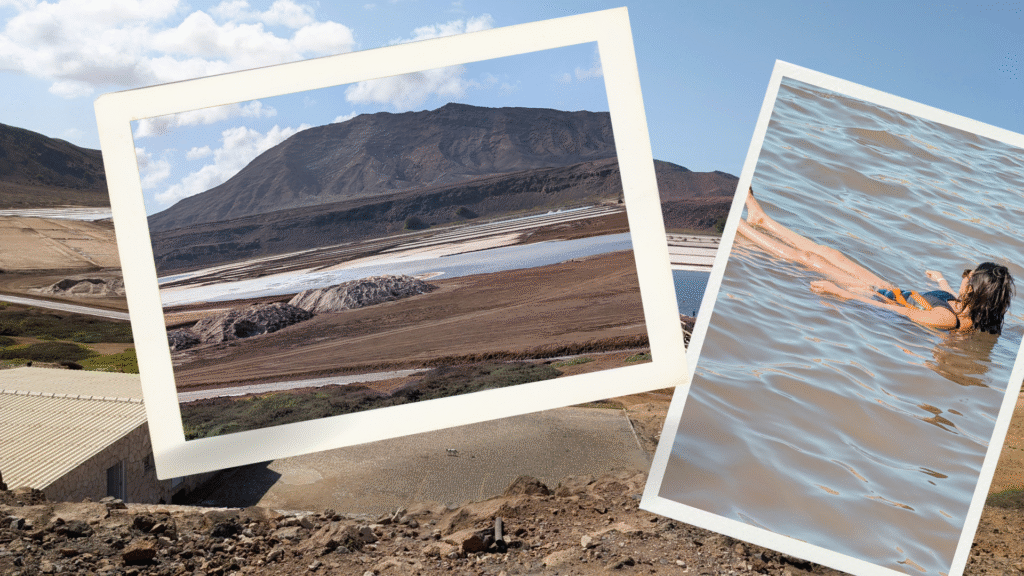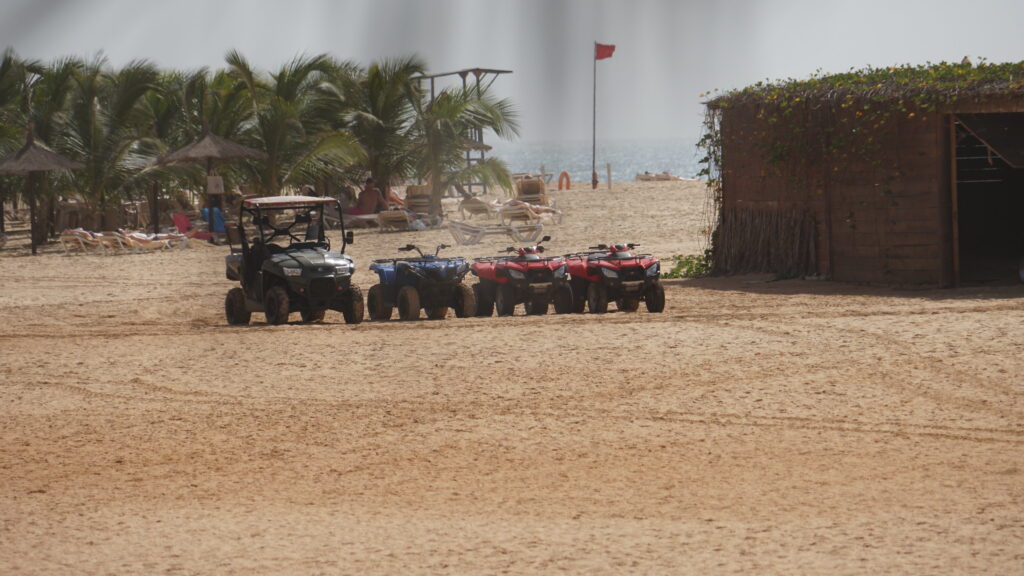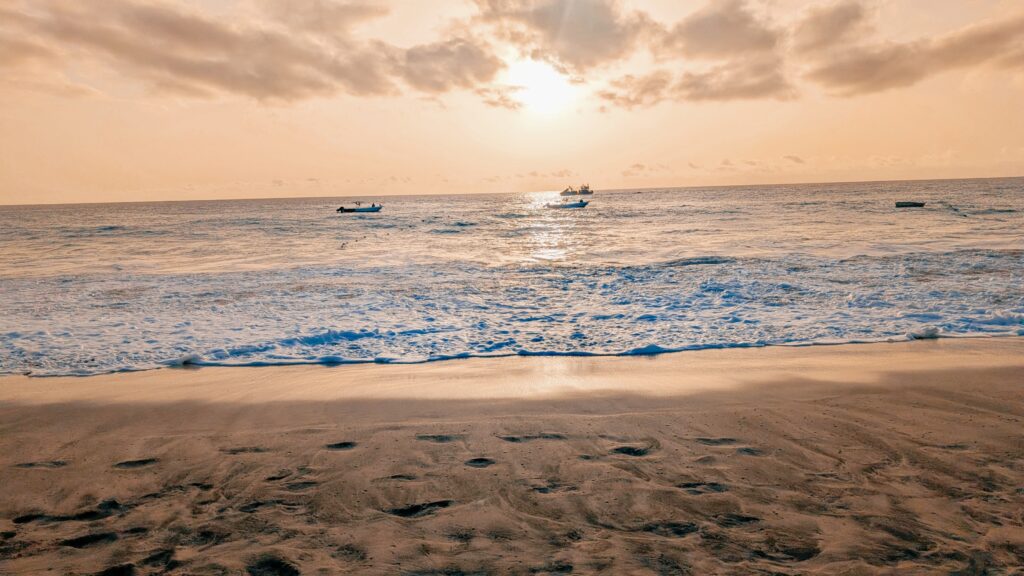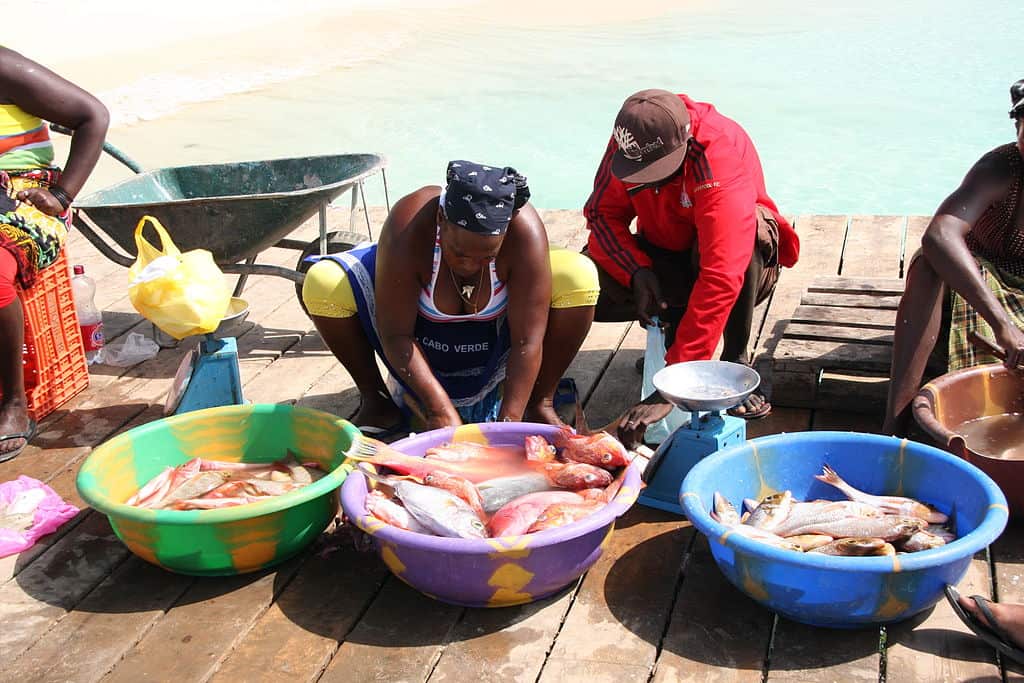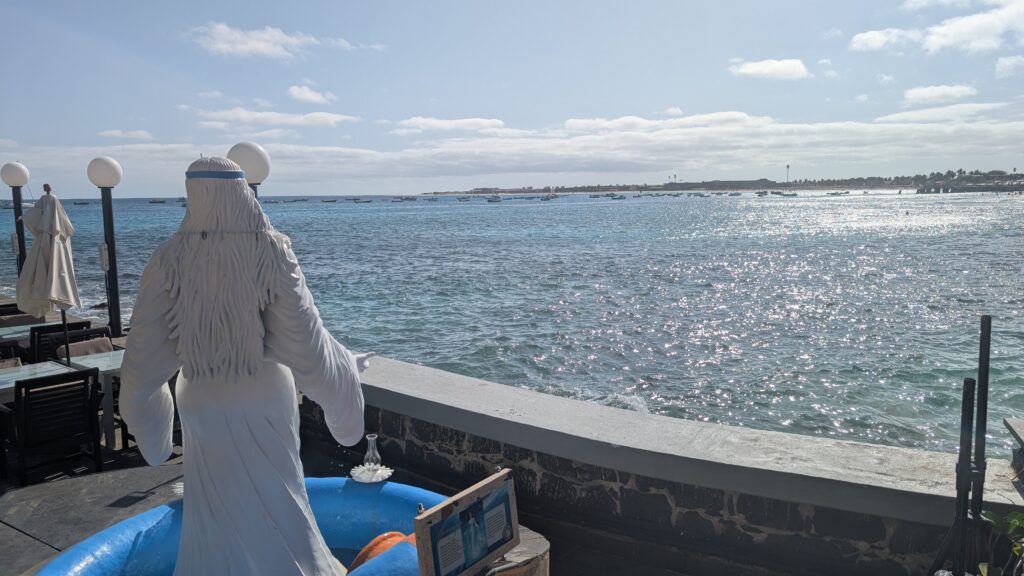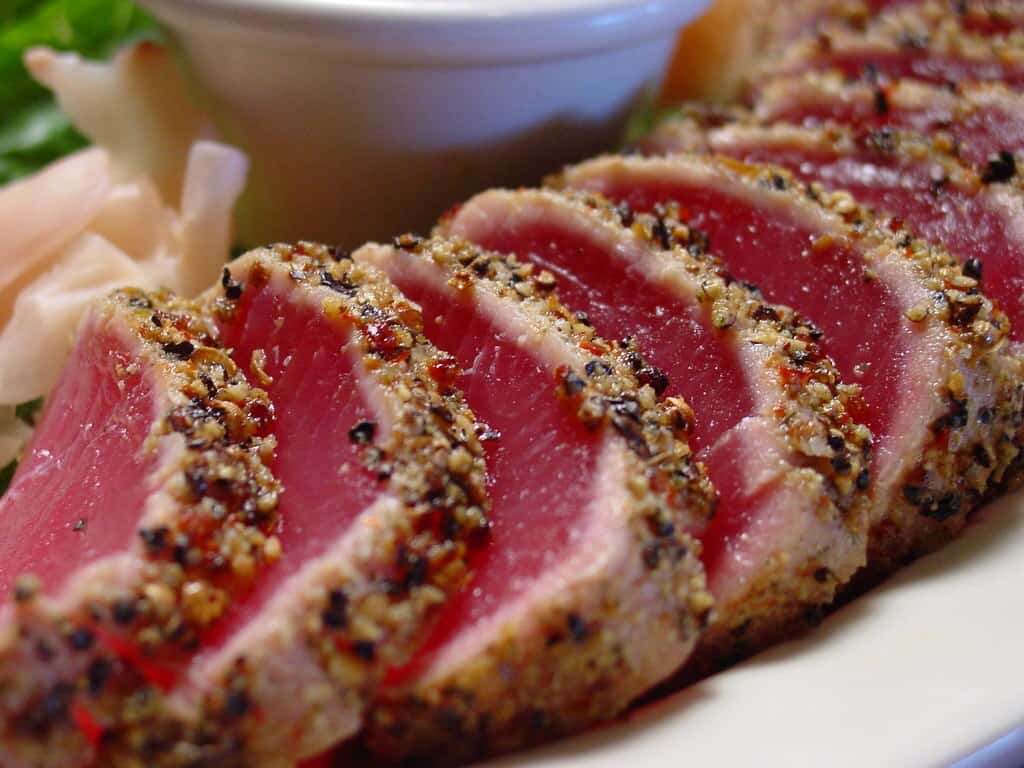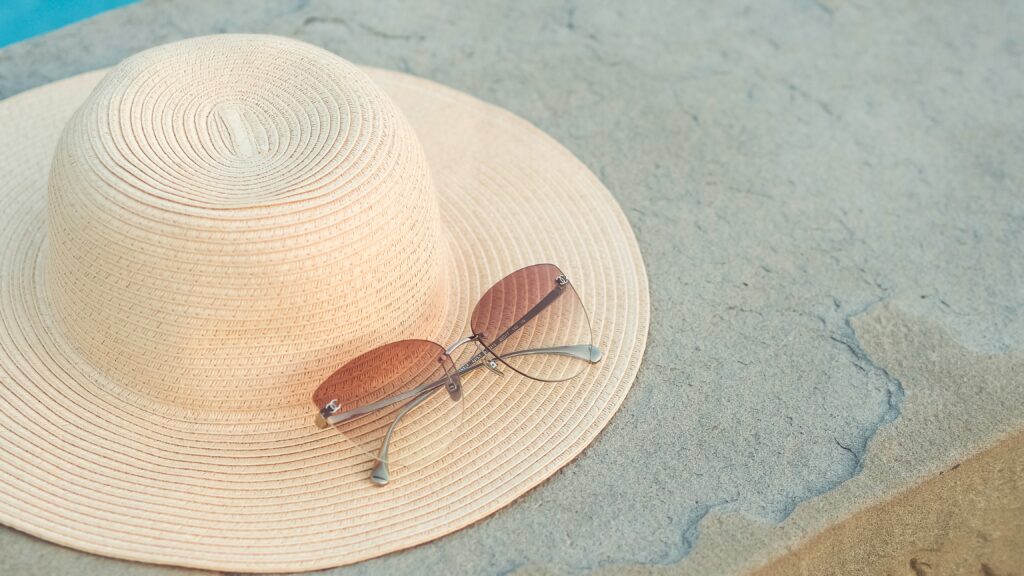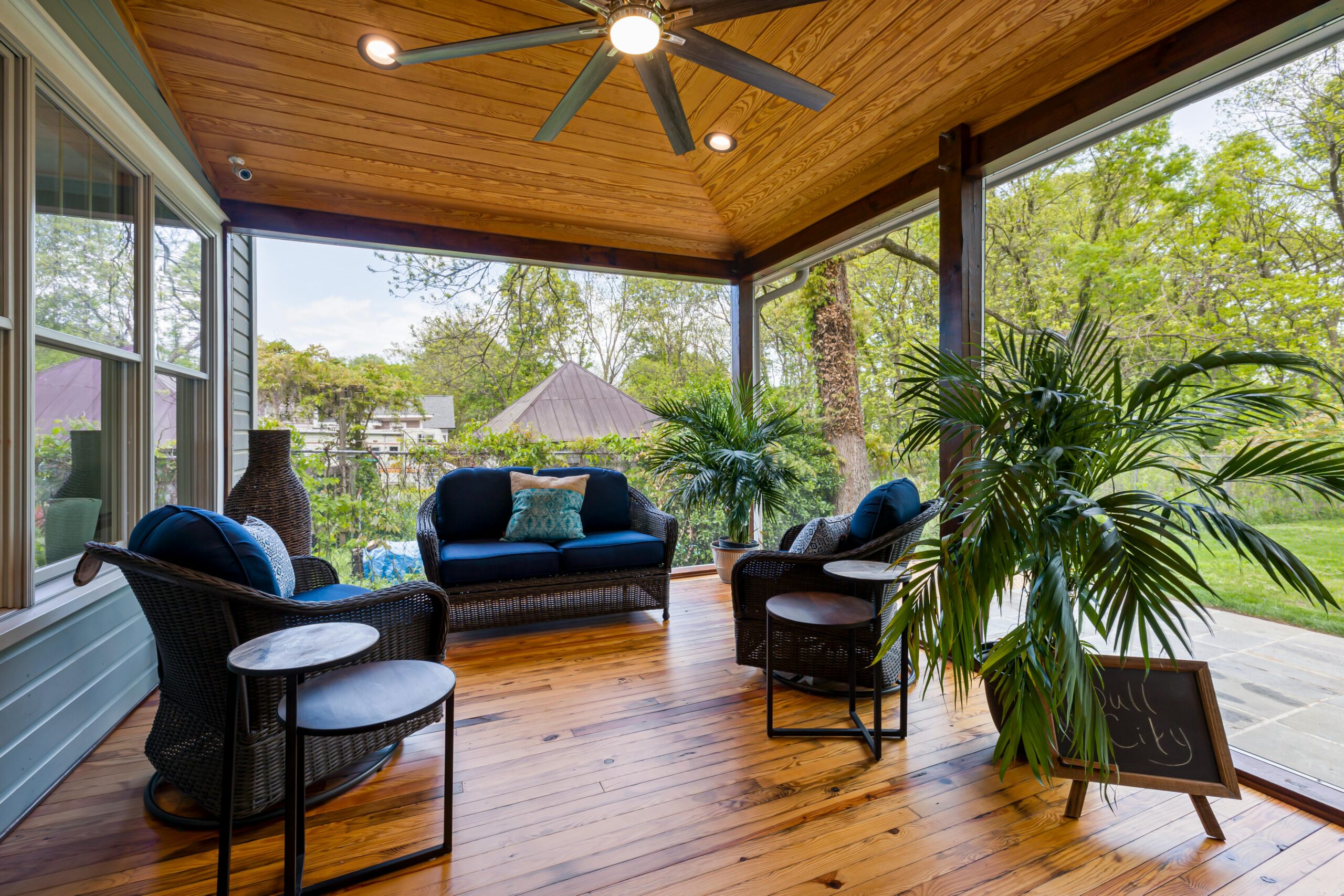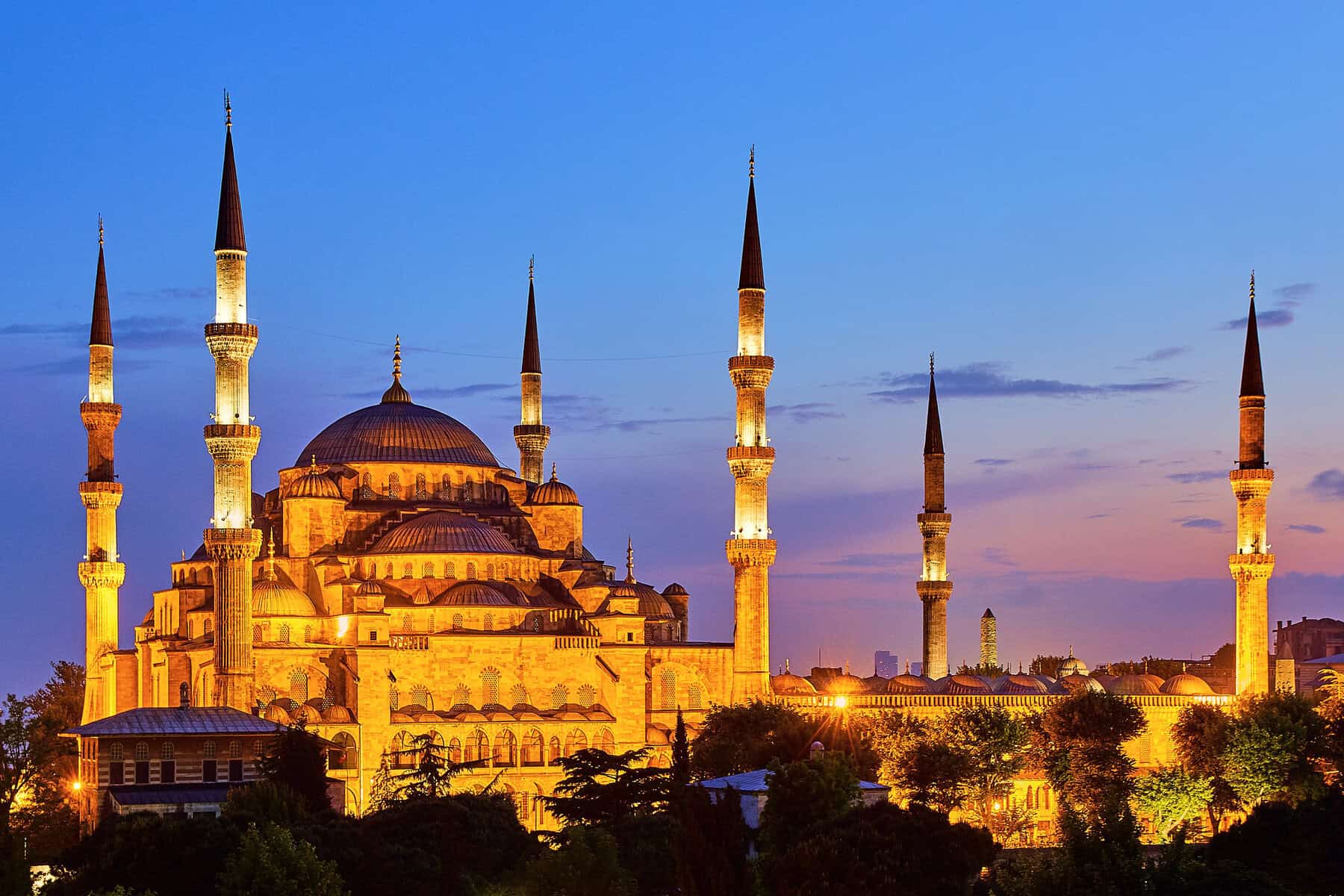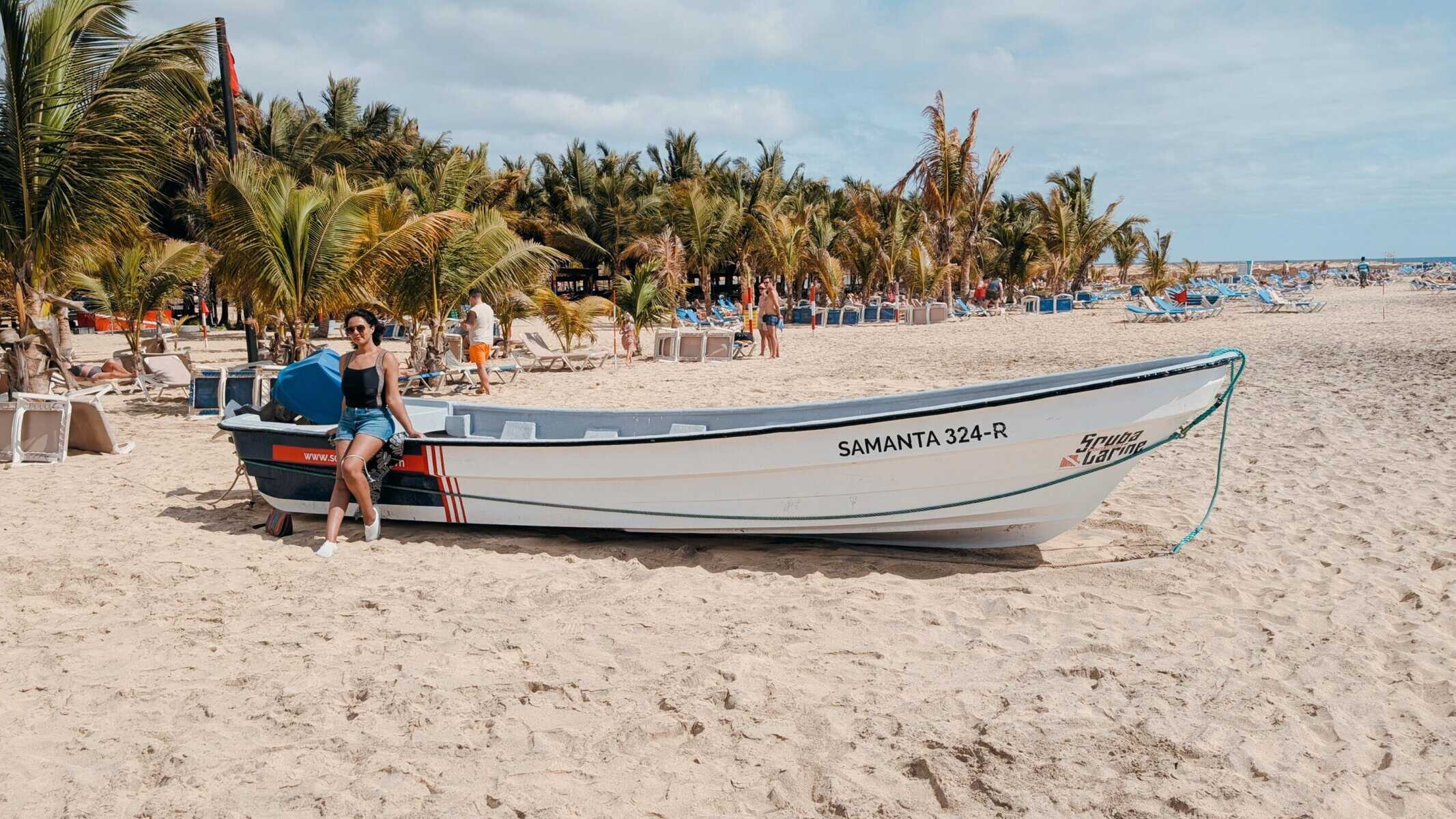
Best things to Do, See and Eat in Sal, Cape Verde in 7 days
Discover the best things to do, see and eat in Sal on your first visit with this inspiring travel guide.
Affiliate disclosure
Any products and recommendations in this article are the result of my personal experiences and careful research so if you book or purchase anything through these links I may earn a small fee at no extra cost to you.
Before my trip, Cape Verde rarely came up in travel conversations or mainstream travel media. Most people couldn’t even place it on a map. Some confused it with the Caribbean; others had simply never heard of it. Although I had been aware of it for some time, I never felt a real urge to visit. I was drawn instead to places I thought were more picture-perfect. Looking back now, I wish I had visited Cape Verde sooner as it turned out to be nothing short of extraordinary and its relative anonymity was part of its magic.
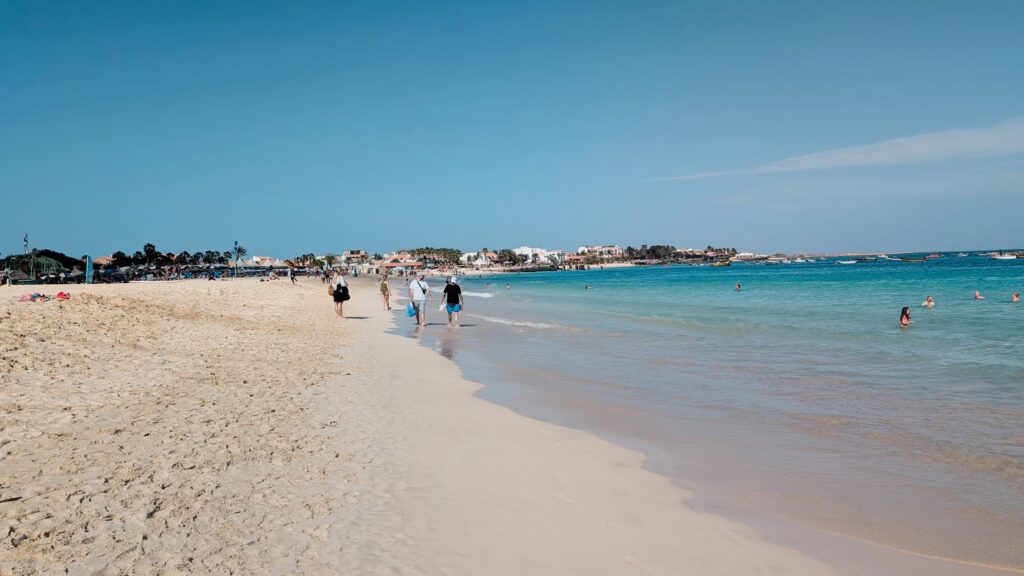
This archipelago off the coast of West Africa, made up of ten islands, is often referred to as the African Caribbean. But it’s so much more than that. Each island has a distinct personality, from the music-filled streets of São Vicente to the rugged peaks of Santo Antão and the moon-like terrain of Fogo. We chose to spend a week in Sal for our first visit.
The first thing that greeted me when I stepped off the plane was a warm, salty wind that felt like a hug from the Atlantic. Walking across the sun-baked tarmac to the arrival hall, I already felt lighter. Not just from the hours spent in the air, but from the sense that here, time stretches itself differently.
Sal doesn’t shout. It hums. You feel it the moment you step inside the airport. The island’s rhythm is unhurried, the smiles come easily. People aren’t stressed here, and it somehow rubs off on you almost instantly.
What Makes Sal the Perfect Week-Long Getaway
Sal isn’t about checking off landmarks or racing through itineraries. If that’s your expectation then you will not like it here. It’s about slowing down and surrendering. One moment you’re sipping a caipirinha barefoot at a beachfront bar in Santa Maria, the next you’re floating in a salt crater inside an extinct volcano. It’s the kind of place that reshuffles your priorities.
In just 7 days, you can ride a quad bike across the island’s dusty, Martian terrain, dance to live morna music under the stars, or do absolutely nothing but listen to the waves for hours. That’s the beauty of Sal. Its simplicity is its luxury.
When to Visit Sal
Sal is a year-round destination, but November to June offers the best combo of warmth, clear skies, and calm seas.
Sal is a year-round destination, but November to June offers the best combo of warmth, clear skies, and calm seas. It rarely rains in Sal, or as our tour guide put it: “It rains twice a year — five minutes in August, five in September”.
Having said that, April, May, and October offer fewer crowds and better deals. We travelled in April and had sunshine and 26°C all week with a light breeze in the evenings.
Getting to Sal Cape Verde
Flying to Sal with TUI: What You Need to Know
While there are other airlines flying to Sal from the UK, TUI has the edge when it comes to convenience. Their direct flights from London and the option to book everything as a single package make things simple. We went for the all-inclusive route, as we wanted a hassle-free, chilled holiday where we didn’t have to think too much.
While the planes are not the fanciest, the flight is smooth and relatively short (roughly 6 hours from London), but do pack snacks; in-flight meals can be… optimistic.
The best part about landing with TUI is the airport transfers which are sorted so you get that extra peace of mind which is what we wanted on our family holiday.
TUI plays a more embedded role in the islands’ development. They employ a significant number of Cape Verdeans in their resorts and are actively involved in local life, supporting community projects and running several charities. Their presence, while undeniably commercial, has also created jobs and contributed to the local economy in meaningful ways ,something I hope future tourism models will continue to prioritise.
EasyJet: Friendly Options from April 2025
There’s good news on the horizon for budget-conscious travellers! EasyJet began operating direct flights to Sal in April 2025. This opens the door to more affordable, low-season getaways, especially for those who prefer piecing together their own itineraries and spending more on experiences than flights. That said, I can’t help but feel a little torn. Part of Cape Verde’s appeal lies in its rawness, its peaceful lack of polish. But with limited infrastructure, it’s hard to imagine how the islands will handle an influx of mass tourism without losing some of that quiet magic.
Airport Arrival Tips
Amílcar Cabral International Airport is compact but functional. Expect a short queue at immigration, a brief heatwave the moment you leave the terminal, and a dozen friendly drivers waiting to help you with your bags. If you haven’t arranged a transfer, don’t worry as taxis are plentiful and reasonably priced. Just agree on the fare beforehand (usually around €15–20 to Santa Maria).
Bring cash (euros are widely accepted), and don’t be alarmed by the relaxed pace. This is Cabo Verde time now! nothing’s rushed.
Where to Stay on Sal Island
Best Areas to Stay: Santa Maria, Murdeira, and Espargos
The sun-drenched seaside town of Santa Maria is where most visitors stay, and for good reason. The beach is the kind that travel brochures dream of: golden sand, turquoise waves, and palm trees lining the promenade. It’s dynamic and slow at the same time. Life here is walkable, beach in the morning, gelato in the afternoon, live music after dark.
Murdeira, by contrast, is Sal’s quieter page. Tucked between the airport and Santa Maria, it offers a more secluded retreat. Think volcanic cliffs, peaceful lagoons, and stargazing with barely a soul in sight. It’s where you go when you want to hear your own thoughts, or silence them entirely.
Then there’s Espargos, the island’s capital. It’s not the prettiest or the most touristic but it’s the heartbeat. Dusty streets, local cafés and a slice of everyday life far from the resorts. Stay here if you want to see beyond the postcard.
Top Beach Resorts for a Relaxing Holiday
For those who like their holidays with a little more pampering, there are several resorts that line the beautiful coast. Melia and Hilton have front beach properties and offer a blend of comfort and elegance. Riu Palace is a popular choice for families. We stayed at the Riu Funana which has beautiful grounds, several pool and its own private beach.
Charming Guesthouses and Budget-Friendly Options
If you prefer charm over chandeliers, Surf House Cabo Verde and La Fora Ecolodge offer the kind of authentic, barefoot luxury that doesn’t break the bank. You’ll find handmade décor, rooftop hammocks, and hosts who’ll remember your name and your coffee order by day two.
the best things to do, see and eat in Sal in 7 days
Strolling the Colourful Streets of Santa Maria
We went for a walk from our hotel to the centre of Santa Maria. It’s an easy 20 mins walk on the road or if you prefer a scenic route, it’ll take you around an hour to walk on the beach. Taxis are just outside the hotel and will take you for 5 euros one way.
We loved wandering Santa Maria. The streets are a palette of pastel buildings with peeling paint and hidden courtyards, where the scent of grilled fish wafts through the air. Local artists sell colourful paintings by the roadside, and musicians strum Cape Verdean Morna while the breeze carries the music along the beach. The promenade runs parallel to the sea, with barefoot kids playing football and couples sipping grogue at wooden beach bars.
Santa Maria Beach: Your First Dip into Island Life
This beach. I can still feel it. Powder-soft sand slipping through your toes while the warm Atlantic gently rolls in at your feet. If you’ve arrived with stress, you’ll leave it right here. Sun loungers are optional! the real magic happens in the shallows, where the ocean stretches into fifty shades of blue. Watch the fishermen haul in their catch at the pier, or join the locals who dive straight off it like it’s a national pastime.
Explore the Island’s Natural Wonders
Most visitors choose to explore the island with a local tour company. There are several to choose from, many of which set up right outside the hotels along the path to the beach. Just take a moment to read the reviews and do a bit of research; most of them are reliable and well-rated.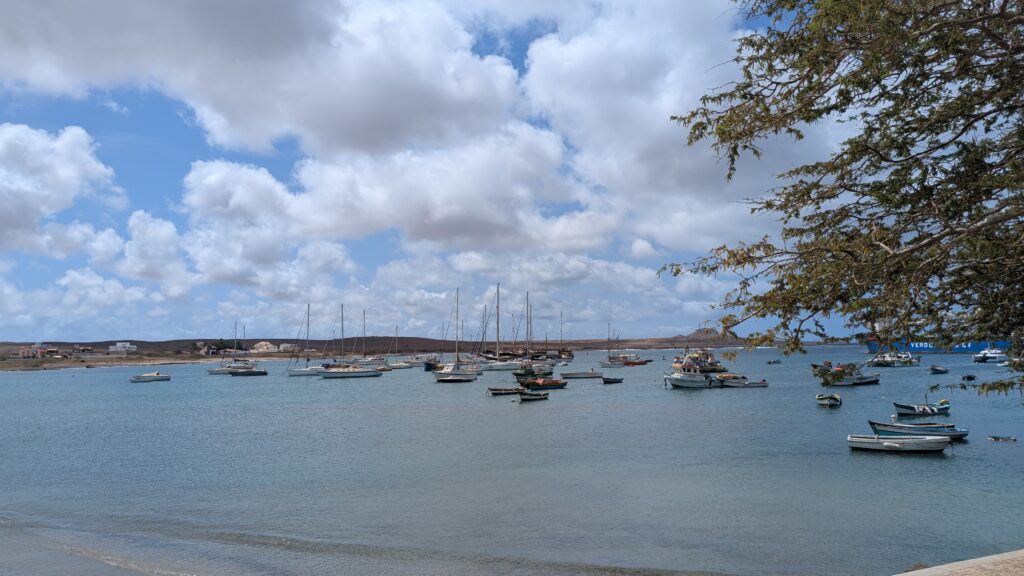 That said, if you prefer a bit more freedom, you can easily explore Sal on your own. The island is small and you can drive across it in under half a day, so hiring a car or hopping in a taxi is a perfectly doable alternative. You can either condense everything into one day or take it slow and spread your adventures out.
We booked our tour through GetYourGuide and had a great experience. It lasted around seven hours, but it never felt rushed or tiring; the distances between stops are short, and there’s plenty of time to walk, stretch, and actually enjoy each place. Our itinerary covered all the following spots.
That said, if you prefer a bit more freedom, you can easily explore Sal on your own. The island is small and you can drive across it in under half a day, so hiring a car or hopping in a taxi is a perfectly doable alternative. You can either condense everything into one day or take it slow and spread your adventures out.
We booked our tour through GetYourGuide and had a great experience. It lasted around seven hours, but it never felt rushed or tiring; the distances between stops are short, and there’s plenty of time to walk, stretch, and actually enjoy each place. Our itinerary covered all the following spots.
Murdeira’s Lagoon
Tucked between Santa Maria and Espargos, Murdeira’s horseshoe-shaped bay is calm and shallow. The cliffs here rise rugged and red against the sea, and if you climb up, you’re rewarded with panoramic views and complete silence.
Kite surfing at Ponta Preta
The wind at Ponta Preta never seems to rest and neither do the kite surfers who ride it so skilfully. In Cape Verde, kite surfing is a national sport, and the locals are seriously good at it. Our guide, a former champion himself, gave us a spontaneous crash course in kite flying. If you’re feeling bold (and have a decent sense of balance), you can sign up for lessons. I was more than content to just watch them soar high in the sky and land on the water like falling petals.
Shell cemetery Beach
A short walk from Ponta Preta is Shell Beach, or Shell Cemetery as locals sometimes call it. It’s not your typical golden-sand beach; instead, the shore is carpeted with thousands of tiny seashells, most of which are broken. There’s something strangely calming about walking on the shells and listening to the soft crunch under your feet.
Blue Eye (Buracona) and Natural Pools
One of Sal’s most surreal spots is the Blue Eye, a natural cave pool that glows electric blue when the sun hits just right. Apparently the best time to see this is between 11 am and 1 pm so our tour guide made sure we got there on time. The spot is manned, you queue for a bit then you advance where a guard sits perched at the edge of the cliff, calmly offering his hand as you lean over the railing to peer into the glowing void below. It’s not for the faint-hearted, especially if heights make you wobbly, but the moment is mesmerising. It’s like staring into the eye of the earth itself.
The site is surrounded by rock pools which are perfect for a quiet dip if the waves aren’t too wild. Unfortunately they were that day so it was closed for swimming but we still enjoyed being there.
Palmeira
Palmeira is a sleepy coastal town on the west side of Sal, known for its colourful fishing boats and laid-back charm. It’s the island’s main port, but don’t expect towering cranes or industrial noise; this is a place where life moves slowly.
Locals gather in the shade to play cards, fresh fish is sold straight from the boat, and visitors are welcomed with warm smiles and the occasional offer of grogue.
While our tour guide was telling us about the history, a local man with a guitar wandered over and quietly took a seat beside us. Without a word, he began to play Sodade — one of my favourites, especially when I hear Cesária Évora’s version.
Our tour guide then took us to visit a women’s co-op which make soaps. These aren’t tourist traps, they’re lifelines for the community. Bring cash, curiosity, and an open heart. Palmeira is not a place full of sights, but that’s exactly where its charm lies; it invites you to pause, observe, and simply soak in the rhythm of everyday island life.
Espargos: The Island’s Cultural Heartbeat
This was our lunch stop. Most tourists skip Espargos. Don’t. It’s not polished or postcard-perfect, but it has soul. This is where locals live, work, and greet each other like family.
As you walk through the town, you begin to see the poorer side of Cape Verde. Dilapidated neighbourhoods, half-built houses left abandoned, and crumbling facades speak of economic hardship. It gives you a sense of just how little many people have; and yet, there’s a quiet resilience in the air. The streets are dotted with colourful murals, shops sell handmade crafts, and small cafés serve coffee strong enough to restart your heart.
We were free to wander on our own for an hour, and while it wasn’t the kind of beauty you photograph for Instagram, it offered a raw, authentic glimpse into the soul of the country.
Terra Boa Mirage
I’ve seen desert mirages before, but this one truly fooled me. As we stepped out of the car and gazed toward the horizon, there it was, a shimmering patch of blue that looked like a perfect, glistening pool of water.
Salt Mines at Pedra de Lume
These salt mines inside an ancient volcanic crater were once the heart of the island’s economy but now they’re a place to float in warm, mineral-rich waters that might sting your eyes but will definitely soothe your soul. It’s said to heal everything from eczema to heartbreak.
Lying back in that saltwater, staring at the open sky with nothing beneath me, it felt like I had hit pause on life. A moment of weightlessness that reminded me how good it feels to simply be.
Playing with baby sharks
Visiting the lemon sharks in Sal is an unforgettable experience that blends adventure with education. At Shark Bay, located on the island’s eastern coast, you can wade into the shallow, clear waters to observe these graceful creatures up close (water shoes are a must here). These visits are often conducted by marine biologists. We were met by a very knowledgeable local guide, who provided deep insights into the behaviour and ecology of lemon sharks and their role in the marine ecosystem. These sharks, known for their docile nature, are accustomed to human presence and our guide ensured safety protocols were followed, so the whole experience felt safe and thrilling for everyone in our group.
Other things to do in Sal
Quad Biking Through the Island’s Lunar Landscape
Adrenaline junkies will be thrilled to tear through the desert on a quad bike, with the horizon stretching endlessly ahead. Sal is full of contrasts. From sea to sand to terrains that look like the surface of the moon. I didn’t bike through the desert but there are several group tours that you can join.
Horseback Riding on the Beach at Sunset
Horse lovers will love riding along the water’s edge just as the sun dips into the horizon. The horses are calm, well looked after, and the guides are charmingly laid-back.
Snorkelling or Diving the Blue Oasis
If you’ve never dived before, Sal is a good place to start. The waters are clear and calm, with just enough marine life to make you feel like you’ve stepped into a quiet, underwater world. Local dive schools are professional and patient with beginners, but still passionate enough to make you fall in love with the ocean and its secrets.
Take a Local Cooking Class or Food Tour
If you want to really understand a place, learn to cook its food. Join a cooking class in Santa Maria where you can learn to make cachupa, Cape Verde’s national dish; a slow-cooked stew of corn, beans, vegetables, and whatever meat or fish is on hand. It’s comfort in a bowl.
Enjoy a Beachside Massage or Spa Experience
Don’t forget to rest! Gift your body a beachside massage or book a spa session if you are staying at a resort.
Yoga and Mindfulness on the Sand
Sal invites slowness. Several places offer sunrise and sunset yoga sessions on the beach. No pressure, just you, the waves, and a gentle voice reminding you to breathe.
Perfect Picnic Spots
Bring a blanket, some local cheese and fruit, and enjoy the beach. Bonus points if you spot the green flash as the sun dips below the horizon.
Last-Minute Souvenir Shopping in Santa Maria
Save space in your bag for keepsakes. Local markets sell handwoven baskets, bold jewellery, and beachwear in every colour imaginable.
Where and What to Eat
I recommend ending your first day with a meal on the beach. Grilled tuna and the sun melting into the sea. Odjo d’Agua serves fresh seafood just steps from the shore, and if you’re lucky, a local band might serenade you under the stars. Caipirinha flows easily here, as does conversation with strangers who quickly feel like old friends.
Best Local Restaurants for Fresh Seafood
Seafood is a way of life here. Chez Pastis, The Dubliner, and Morabeza Beach Club serve everything from grilled octopus to fresh lobster. Portions are generous, prices fair, and the ocean views? Always front row.
Sample Catchupa: Cape Verde’s National Dish
If you haven’t tried cachupa yet, rectify that before leaving. Slow-cooked, hearty, and humble, it’s Cape Verde in a bowl.
Besides cachupa, don’t miss the grilled tuna steaks, lobster risotto, or pastel com diablo dentro: spicy tuna pastries that pack a punch.
Vegan and Vegetarian Options Around the Island
While not always obvious, plant-based options do exist. Look for veggie curries, grilled plantains, fresh papaya salads, and lentil stews. Many restaurants are happy to adapt their dishes if you ask them.
Nightlife in Sal Cape Verde
Santa Maria comes alive after dark. Think beach clubs with DJ sets, reggae bars pulsing with rhythm, and live morna serenades that pull at your heartstrings. Try Buddy Bar or One Love Reggae Bar for a soulful vibe.
Prefer your nights mellow? Rooftop bars and seafront lounges serve craft cocktails and chill beats. Or lose yourself in moonlight, listening to waves instead of WiFi.
Getting Around the Island
Taxis are easy to find but agree on the price first. Aluguers — shared minibuses — are the cheapest and most fun way to meet locals (and goats). Bike rentals are perfect for exploring Santa Maria, and scooters are a zippy option too.
Is It Worth Renting a Car or Buggy?
If you’re planning to explore further afield, a buggy is your best bet, especially for off-road areas. Cars are available but less fun. Just watch out for speed bumps and free-roaming dogs.
Money and Practical Tips
Currency, ATMs, and Tipping Etiquette
The local currency is the Cape Verdean escudo, but euros are widely accepted. ATMs are in major towns; just don’t wait until you’re out in the dunes. Tipping isn’t expected but always appreciated (around 10%).
Staying Connected: SIM Cards and Wi-Fi
Buy a local SIM at the airport or in Santa Maria for cheap data. Wi-Fi is decent in most hotels and cafes, but don’t expect fibre speeds. I only use eSims with Airalo and recommend it if you want extensive and affordable coverage.
Safety and Travel Insurance Essentials
Sal is generally safe and laid-back. Still, standard precautions apply. Don’t leave valuables on the beach, and get a travel insurance if you’re doing activities like diving or quad biking.
What to Pack for a Week in Sal
Swimwear, breathable clothing, flip flops for the day. Evenings get chilly so pack a light sweater and a pair of trousers.
Don’t Forget These Travel Must-Haves
Bring cash, motion sickness pills (for boat trips), reef-safe sunscreen and a sense of humour. Things run on island time so let go of schedules and lean into the flow.
Final Thoughts
Sal isn’t just a beach destination. It’s a state of mind. There’s a local saying: “No stress.” And they live by it. Time slows down, and you’re invited to do the same. A week here resets your system. You come for the beaches, stay for the rhythm, and leave with a lingering sense that maybe life doesn’t have to be so fast and so loud.
My best tip is to say yes to things you didn’t plan. Speak to locals. Try new flavours. Let the wind tousle your hair and the waves lull you to sleep. In Sal, you don’t find adventure, it finds you.


